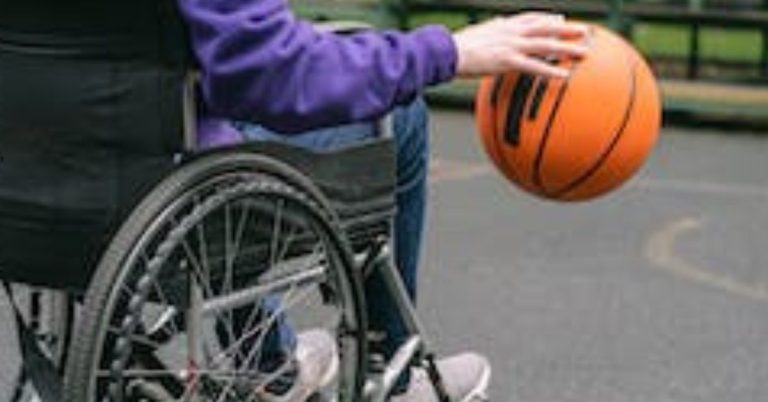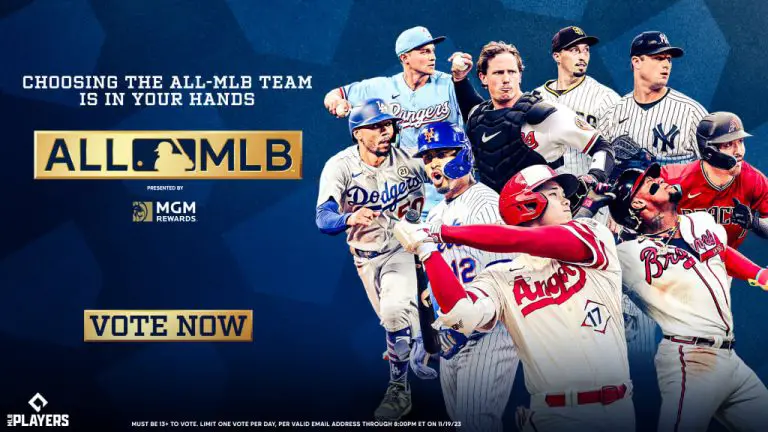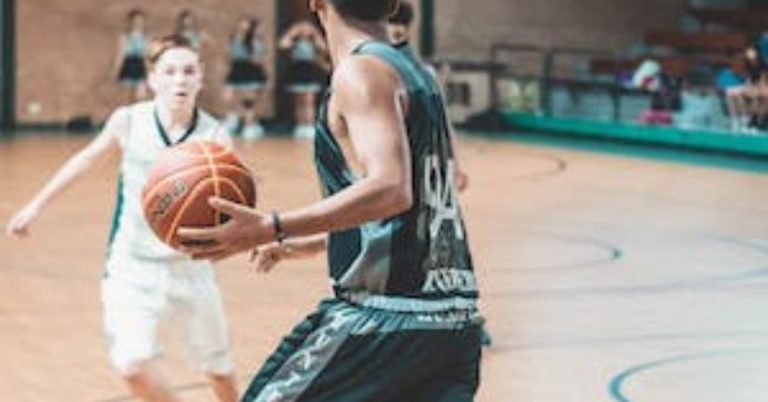Why Don’t Baseball Players Wear Face Masks?: Uncovered!
Baseball players typically don’t wear face masks due to tradition and a preference for unhindered visibility. Masks can interfere with players’ field of view and comfort.
In the game of baseball, player safety is always a priority, yet the sport has remained relatively unchanged in terms of protective gear for decades. Face masks are not mandatory, and most players opt-out due to the discomfort and the potential for obstructed vision, which can impact performance.
The importance of quick reflexes and clear sightlines in baseball cannot be overstated, which is why traditional caps and helmets without face masks remain the standard. As players prioritize familiarity and a full range of vision on the field, the debate about the incorporation of more protective equipment like face masks continues to be a topic of discussion in the baseball community.
The Tradition Of Baseball Attire
The look of a baseball player is iconic. From the cap to the cleats, each item carries a legacy. Baseball attire stands test of time. It blends function, fashion, and tradition. Fans and players alike hold this look dear. But why no face masks? Let’s explore.
Historic Uniform Norms
Baseball uniforms are steeped in history. Introduced in the 1840s, they evolved from bulky wool to today’s lightweight fabrics. Notably, protective gear became common. Yet, face masks never joined the standard uniform. The reasons are practical and sentimental.
- Catchers and Umpires: Only they traditionally wore masks.
- Visibility: Fielders value a clear line of sight.
- Communication: Open faces allow on-field talk.
- Comfort: Masks can be hot and restrictive.
Cultural Significance Of The Baseball Look
The unique look of baseball players mirrors the sport’s culture. It’s a blend of comfort, freedom, and minimalism. Players take pride in this clean-cut style. It’s also a nod to the origins of the game.
- Identity: Players are recognizable by uniforms.
- Respect: Keeping uniforms clean is an unwritten rule.
- Unity: Matching gear promotes team spirit.
- Affinity: Fans love collecting player jerseys and caps.
In conclusion, baseball players dress for the game they love. They uphold a look that harks back to simpler times. This includes no face masks as standard attire. The gear they don is part pride, part utility. It respects the game’s heritage, ensuring it continues into the future.
Assessing Injury Risks In Baseball
Baseball, a beloved American pastime, is a sport filled with thrill and precision. Yet, as with any sport, it comes with its fair share of injury risks. Players perform high-speed actions, like sprinting for bases and pitching balls at great velocities, with the potential for accidents. While protective gear is common, one question arises: why aren’t face masks part of the standard uniform for baseball players? Let’s delve into the common injuries in the field and consider pitcher protection strategies.
Common Field Injuries
Baseball players face various injuries during play. Here is a rundown of some common ones:
- Ball Impact Injuries: Given the game’s dynamics, getting hit by a ball is a risk outfielders and infielders face, which can lead to bruises, fractures, or concussions.
- Sliding Injuries: Sliding into bases often causes scrapes and even serious ankle or knee injuries.
- Overexertion: Muscle strains and sprains are frequent, stemming from abrupt movements or overuse.
Pitcher Protection
Pitchers, due to their role, have heightened exposure to line drives. Here are several measures for their protection:
| Protective Gear | Usage |
|---|---|
| Gloves | Standard in games, they mitigate hand injuries. |
| Protective Caps | Reinforced caps protect against head injuries from batted balls. |
| Face Guards | Rarely used, they protect the face but can hinder visibility and mobility. |
Teams assess risks and implement gear accordingly. Consistent training and reflex drills help in minimizing pitcher injuries without impairing performance. As such, face masks remain uncommon as they might limit the players’ ability to see and react quickly on the field.
Protection Vs. Performance
In the fast-paced world of baseball, every second counts. Players constantly weigh their need for protection against their desire to perform at peak levels. While face masks can offer additional safety, they come with potential drawbacks that may impact a player’s game. Let’s dive into the reasons why baseball players often opt to go without face masks, focusing on visibility, communication, comfort, and mobility.
Impact On Visibility And Communication
Visibility is crucial for a baseball player. A clear line of sight helps with tracking the ball, focusing on signals, and making split-second decisions. Face masks can introduce blind spots or cause visual distortions, compromising a player’s ability to perform. Additionally, effective communication is key between teammates. Face masks might muffle voices, making it tough for players to relay messages quickly and accurately on the field.
Comfort And Mobility Considerations
Baseball demands quick reflexes and fast movements. Extra gear can be cumbersome, potentially hindering a player’s ability to move swiftly. Personal comfort also plays an important role in performance. Masks may cause discomfort due to heat retention or irritation, leading players to forgo wearing them. Finding the right balance between staying safe and maintaining top performance is a challenge that each player approaches differently.

Credit: www.theguardian.com
Psychology Of Safety Gear
The Psychology of Safety Gear plays a crucial role in sports. In baseball, safety equipment is essential. Yet face masks are rare. Why is this? The reasons go beyond the physical to the psychological. Players’ attitudes towards safety gear affect their choices.
Perception Of Weakness
Face masks can signal vulnerability. Many players avoid them. They believe that wearing a mask could show fear. Opponents might see this as an advantage. Peers might question their resilience. This perception affects their choice.
- Signal of fear
- Opponents’ perception
- Peer judgment
Mental Toughness And Traditions
Baseball values mental toughness. This trait is often associated with playing without extra protection. Veterans pass this belief to newcomers. The tradition becomes a norm. Players feel pressure to conform.
| Mental Toughness | Linked with fewer safety gears |
|---|---|
| Tradition | Passed down from senior players |
| Pressure to Conform | Expectations from team and sport |
Technological Advances In Safety
Technological Advances in Safety have transformed many sports, including baseball. Yet, baseball players rarely wear face masks during games. Understanding why involves exploring recent safety innovations and the inherent resistance to change within the sport.
Recent Innovations
Baseball safety technology has evolved significantly . Manufacturers have developed advanced materials and designs to protect players without sacrificing comfort or visibility.
- Polycarbonate face guards: Lightweight and strong, they shield without blocking vision.
- Carbon fiber helmets: Offer superior protection and durability with less weight.
- Gel padding technology: Absorbs shock, reducing the risk of injury upon impact.
These innovations have led to better safety equipment now available to players at all levels.
Resistance To Change
Despite these advances, a strong cultural resistance exists. Many players choose tradition over change. Others believe masks can interfere with game play or perception.
| Reason for Resistance | Common Concern |
|---|---|
| Tradition | Preference for the classic look and feel of the game. |
| Perception | Belief that masks might hinder visibility and awareness. |
| Comfort | Concerns that masks might be uncomfortable during play. |
Safety is a priority, yet personal choice and comfort often guide players’ gear decisions.
Major League Baseball (mlb) Policy On Face Masks
When you look out onto a baseball field, one thing you might notice is the lack of face masks on the players. In other sports, like hockey or football, protective face gear is common. So why don’t baseball players follow suit? Inside the MLB, specific policies guide player equipment and safety protocols. Let’s dig into the current stance that Major League Baseball takes on the use of face masks.
Current Regulations
As per MLB regulations, there are no mandated rules for the use of face masks for players in the outfield. Catchers and batters have specific helmet and mask requirements.
- Catchers wear masks to safeguard against foul balls and stray swings.
- Batters use helmets with optional face guards.
- Pitchers and infielders often choose comfort over additional protection.
The Role Of The Mlb In Player Safety
The MLB prioritizes player safety, conducting sustained research and development on protective gear.
In the past, impactful incidents have led to changes in safety equipment. Yet, the league’s stance on face masks remains unchanged. This is partly due to the rarity of serious face injuries in the field and a tradition that celebrates the ‘bare-faced’ nature of the sport.
Player choice and comfort also play key roles in this policy. Many players believe face masks can obstruct visibility or hinder performance. Yet, MLB constantly reassesses equipment policies to ensure a safe playing environment.
Comparative Analysis With Other Sports
In exploring why baseball players typically refrain from wearing face masks, a stark contrast is discovered against other sports. Sports like hockey and football have long integrated face protection into their standard gear. This comparative analysis delves into the reasons behind differing safety equipment protocols across these athletic fields.
Face Protection In Hockey And Football
Hockey and football are high-contact sports. The use of helmets equipped with face masks is crucial.
- Helmets prevent head injuries.
- Face masks protect against facial cuts and broken bones.
- Visors and cages shield eyes and teeth during collisions.
| Sport | Type of Face Protection |
|---|---|
| Hockey | Full-face cage or visor |
| Football | Face mask attached to the helmet |
Safety gear in hockey and football reflects the potential for direct, forceful impacts to the face, making face masks essential.
Why Baseball Differs
Despite the risk of injury, baseball does not typically see players donning face masks. Key reasons include:
- Field positioning allows for a wider view and reaction time to avoid injury.
- Baseball prioritizes hand-eye coordination and visual acuity; face masks could obstruct view.
- Historical tradition in baseball sees minimal protective face gear, unlike football and hockey.
Furthermore, the incidence of facial injuries in baseball is lesser compared to the aforementioned sports, often negating the perceived need for face masks in baseball culture.

Credit: www.cnn.com
Voices From The Field
Baseball traditions run deep. Safety gear evolves steadily, yet face masks remain uncommon on the field. Players and professionals share their thoughts.
Players’ Opinions On Face Masks
Professional ballplayers have their say about masks:
- Visibility is key. Masks may block the view.
- Comfort matters. Some find masks too restrictive.
- Tradition speaks loud. Old-school players often resist changes.
Young players today care more for safety. They’re open to mask use.
Coaches’ And Trainers’ Insights
Those teaching the game weigh in:
- Protection versus performance. Coaches value both.
- Custom training. Sessions now include safety more.
- Injury prevention. Trainers emphasize minimizing risks.
Athlete safety is a top priority. Coaches and trainers balance tradition with new safety measures.
The Economics Of Baseball Safety Equipment
In the high-stakes world of professional baseball, player safety remains a hot topic. Yet face masks, a viable safety option, are rarely seen on the field. Why the hesitation? The answer often lies in the complex economics of baseball safety equipment. Let’s explore the cost implications and the insurance and liability factors that influence this decision.
Cost Factors
Incorporating face masks into the game involves significant expenses. Teams must consider:
- Manufacturing costs: High-quality materials and production
- Customization: Adapting masks to fit each player
- Maintenance: Ongoing upkeep for durability
These costs add up, making widespread adoption a tough pitch for teams focused on budget constraints. Unlike helmets and gloves, the perceived immediate necessity of face masks does not always justify the investment.
Insurance And Liability Implications
Insurance costs spike with added safety gear. More equipment means:
- Higher premiums for teams
- Complex claims in the event of injuries
Liability concerns also creep in. Teams must ensure that any new safety equipment doesn’t impede playing ability or increase the risk of accidents. A lack of masks, thus, shifts responsibility onto players, who exercise personal judgment on the field.
The Future Of Face Masks In Baseball
Exploring the topic of the future of face masks in baseball opens up a discussion about player safety and the game’s evolution. As technology and awareness improve, the adoption of protective gear becomes a pertinent conversation. The game is traditional but not immune to change, especially when player health is at stake.
Potential Shifts In Safety Culture
Baseball’s safety culture has evolved slowly, yet consistently. The introduction of helmets and protective netting changed the game for the better. As face injuries remain a concern, some predict a shift toward face masks for batters and even fielders. This change gains momentum as:
- Manufacturers improve design for comfort and visibility,
- High-profile injuries highlight the risks of the sport,
- New rules emerge promoting player safety.
These factors could pivot baseball towards a new standard where face masks become as commonplace as batting gloves and helmets.
The Next Generation’s Attitude
Youth leagues often adopt safety measures before they reach the majors. They help shape the attitudes of up-and-coming athletes. Children grow up with safety gear as a norm, not an exception. When these players enter professional leagues, they carry with them a heightened sense of safety. A table highlighting the differences in attitude towards safety gear can shed light on this evolution:
| Generation | Attitude Towards Face Masks | Impact on Baseball |
|---|---|---|
| Previous | Reluctant | Slow adoption, high injury risk |
| Current | Aware but hesitant | Growing interest, transitional phase |
| Next | Accepting and proactive | Potential for full integration |
Social media and peer influence also propel this trend. Young players emulate their professional heroes who increasingly showcase new safety gear, including face masks. With safety as a priority in youth leagues, the path is paved for this attitude to ascend to the majors, potentially transforming the game’s approach to face protection.

Credit: www.nytimes.com
Frequently Asked Questions For Why Don’t Baseball Players Wear Face Masks
Why Do They Wear Masks In Softball But Not Baseball?
Softball players often wear masks for added safety due to closer infield positions and the game’s faster reaction times. Baseball typically involves greater distances, reducing impact risks, leading to less mask usage.
Did Mlb Players Wear Masks?
Yes, MLB players wore masks during the height of the COVID-19 pandemic to comply with health and safety protocols.
Can Boys Wear Face Masks In Baseball?
Yes, boys can wear face masks in baseball for safety or health reasons. Masks may vary from protective gear to cloth coverings.
Conclusion
Wrapping up, the absence of face masks in baseball boils down to tradition, visibility, and comfort. It’s a balance between safety and performance. As gear evolves, so might the choices players make. Keeping an eye on future trends, the game may eventually embrace protective advancements.
Stay tuned to the field for changes!

Hello, I am Mark Hertz a full-time blogger and digital content creator. My passion and profession is blogging and sharing with this blog various ways to make money online from internet.








3 Comments